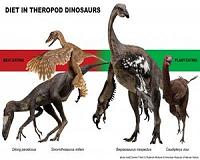 |
Johannesburg (AFP) Dec 22, 2010 A booming black-market demand for rhinoceros horns is driving a lucrative new wave of high-tech poaching that threatens the fight to save the world's rhino populations from extinction. The epicentre of the crisis is South Africa, which has lost nearly one rhinoceros a day to poaching this year. But conservationists fear the problem could spill over into other regions, pushed by a surge in demand for rhino horn in Asia, notably in Vietnam, where it is used as a traditional medicine and sells for tens of thousands of dollars per horn. South Africa, which is home to more than 70 percent of the world's remaining rhinos, has lost 316 of the animals to poaching this year, up from 122 last year, and a jump from less than 10 each year two decades ago, according to Joseph Okori, African rhino coordinator for the World Wildlife Fund. "It has been a disastrous year for rhino conservation," Okori told AFP. He blamed the surge in poaching on "well-organised syndicates" that use helicopters, night-vision equipment, veterinary tranquilisers and silencers to hunt their prey at night. "The criminal syndicates in South Africa operate on very high-tech. They are very well-coordinated," Okori said. "This is not normal poaching." Conservationists estimate there are around 25,000 rhinos left globally, with three species in Asia and two in Africa. Asia's rhino populations have already been pushed to the brink of extinction by hunting and deforestation. The International Union for Conservation of Nature (IUCN) lists both Javan and Sumatran rhinos as critically endangered and Indian rhinos as vulnerable to extinction. In Africa, conservationists have fought to restore the continent's black and white rhino species, both decimated by hunting in the 19th and 20th centuries. Thanks to the large-scale creation of national parks and efforts to combat poaching, the southern white rhino, once thought to be extinct, now numbers 17,500 and growing. Black rhino numbers are also rising and stand at 4,200 -- though this is a fraction of the hundreds of thousands thought to have roamed the continent in 1900, the IUCN says. But that resurgence now faces a setback as a new wave of poaching hits the continent. While the rhino horn trade is banned under the 175-member Convention on International Trade in Endangered Species (CITES), the use of rhino horn in Asian traditional medicine has continued to feed demand. In one recent case, a rhino horn sold for 70,000 dollars, according to CITES. The wildlife monitoring group Traffic, which has studied the medicinal use of rhino horn powder, says the substance is used as a fever-reducer in traditional Chinese medicine. More recently, researchers say, a belief that rhino horn can cure cancer has emerged in Vietnam. Tom Milliken, Traffic's director for east and southern Africa, said that belief -- together with Vietnam's recent economic boom -- is helping drive the current surge in poaching. "Vietnam suddenly emerged in the mid-2000s as a new market," he told AFP. "In my view it is the largest rhino horn market in the world today and really stands behind this trade." Milliken led a delegation of South African officials to Vietnam in October to meet with his contemporaries there on measures to curb the trade, but no agreements have been reached. South African officials are meanwhile targeting the supply side. The government launched a National Wildlife Crime Investigation Unit in October to crack down on poachers. Parks and game reserves have also begun a range of inventive anti-poaching programmes, including dying the horns, tracking them with micro-chips and cutting them off before poachers can get to them. But Milliken fears the crackdown in South Africa will only displace the problem to other regions. "That's the whole history of the rhino horn trade to Asia," Milliken said. "There's unlimited consumer demand driving this, and if it's not contained at source, it historically has swept from one country to another."
Share This Article With Planet Earth
Related Links Darwin Today At TerraDaily.com
 Meat-Eating Dinosaurs Not So Carnivorous After All
Meat-Eating Dinosaurs Not So Carnivorous After AllChicago IL (SPX) Dec 22, 2010 Tyrannosaurus rex may have been a flesh-eating terror but many of his closest relatives were more content with vegetarian fare, a new analysis by Field Museum scientists has found. The scientists, Lindsay Zanno and Peter Makovicky, who will publish their findings in the journal Proceedings of the National Academy of Sciences, used statistical analyses to determine the diet of 90 species of thero ... read more |
|
| The content herein, unless otherwise known to be public domain, are Copyright 1995-2010 - SpaceDaily. AFP and UPI Wire Stories are copyright Agence France-Presse and United Press International. ESA Portal Reports are copyright European Space Agency. All NASA sourced material is public domain. Additional copyrights may apply in whole or part to other bona fide parties. Advertising does not imply endorsement,agreement or approval of any opinions, statements or information provided by SpaceDaily on any Web page published or hosted by SpaceDaily. Privacy Statement |